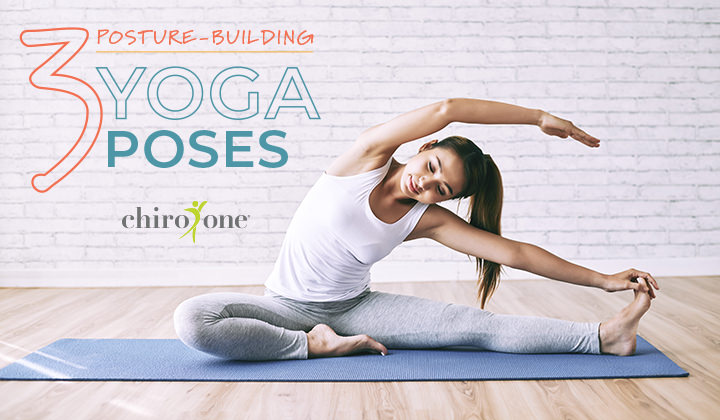
Yoga for Posture: 3 Poses to Improve Alignment
Hoping to improve your posture? Support your chiropractic adjustments with these three simple posture-building yoga poses to build strength, and improve your posture and flexibility.

A lot of people think bad posture is mostly how you look—and that’s not unreasonable. It’s noticeable, right? It’s the difference between looking tired vs. alert, and for some, confident vs. uncomfortable. But there’s so much more going on with bad posture than meets the eye.
Here’s what bad posture actually means for your body and what you can do to fix it.
Are you hunched over at your desk right now? Looking down at your phone, neck craned? Yep, we see you—and it’s OK. Most people don’t exactly make good postural habits a priority. But trust us, it’s definitely having an impact on your body.
Appearance benefits aside, good posture can help you maintain the correct alignment of bones and joints, reduce stress and inflammation on your ligaments, minimize risk of injury, prevent muscle strain and overuse, conserve energy and decrease wear and tear on the joints.
And that’s a big deal! Your muscles, ligaments and bones are all a part of your musculoskeletal system, and if they aren’t operating correctly, they can affect the rest of your body—most noticeably your spine. We’re talking slipped discs, misaligned vertebrae and more. These issues open you up
to a whole litany of mechanical and symptomatic problems!
So… how do you know if there’s a problem with your posture? How can you even begin to tell if your poor posture has affected your health enough to develop symptoms? It’s actually really easy to spot. You just have to know how.
Consider whether or not you notice any of these symptoms in your daily life:
86 percent of Americans work a desk job,
and sitting for such long periods, especially improperly, leaves many of us wide open for pain and dysfunction. Slumped or hunched shoulders are one
of the most common postural problems of sedentary work. This is when your shoulders are more rounded with a tendency of your biceps turning inward.
This is a big one that we see often in our offices, and in today’s tech world, it’s an easy pattern to get into. When your head is too far forward, it
can put up to forty extra pounds of weight on your cervical spine, leading to pain and dysfunction. Your ears should line up directly above your shoulders.
When one side of your hip is higher than the other, it can force you to put more weight on one side of the body. Uneven weight distribution can cause a structural imbalance in the body, forcing more wear and tear on the joints.
If you’ve said “Yes!” to any of these questions… it may be time to have a chat with your chiropractor.
Routine chiropractic care can not only help you correct your posture, it can also help you maintain it throughout your lifetime. Regular chiropractic adjustments and some advice from your chiropractor can make all the difference.
Here are some helpful tips from the American Chiropractic Association that may help you out:
Subscribe and get news, articles & offers sent right to your inbox each month.
"*" indicates required fields
By subscribing you are agreeing to the Terms and Conditions and Privacy Policy.